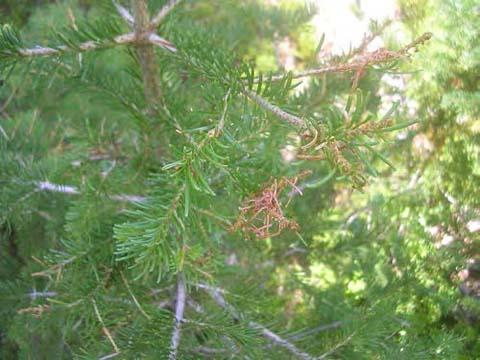Western spruce budworm outbreaks are often decades long in the interior West and defoliate extensive areas, which could give a visual impression that trees are dead and a serious fire hazard. However, their impact on fire behavior is poorly understood, and mortality levels are low. To better understand this phenomenon, we used two approaches: 1) we teamed up with scientist at the University of Oregon to look at centuries long records of western spruce budworm outbreaks and fire histories; 2) at the Missoula Fire Lab we used sophisticated new fire models to understand how removing foliage affects fire behavior.
To isolate the effect that defoliation has on crown fuels, FFS Forester Greg Cohn and FFS Research Ecologist Russ Parsons, simulated single tree torching across a range of crown fuel changes that occur during western spruce budworm infestation. By isolating the effects on a single tree and simulating the tree in a three-dimensional fire model called the Wildland-Urban Interface Fire Dynamics Simulator (WFDS), these researchers were able to identify precise links between western spruce budworm disturbance and fire behavior changes. Results indicates that defoliation dampens crown fire behavior by inhibiting fire spread between crowns and increasing the surface fire intensity necessary to ignite a single tree crown. This change in crown ignition is unique because it results from reduced crown fuel without a change to crown fuel base height.
Through reconstructions of historic climate, fire history, and western spruce budworm outbreaks, our collaborators at the University of Oregon found that historically there has been little overlap between the two disturbances. Fire and western spruce budworm respond to different climate conditions that occur at different time scales. These climate conditions dominate the occurrence of both disturbances, causing little interaction between fire and western spruce budworm. To learn more about the work of our collaborators at the University of Oregon, go to: http://geog.uoregon.edu/envchange/jfsp.html
Top photo: Western spruce budworm defoliated branches of a Douglas-fir in Montana. Bottom image: The Wildland-Urban Interface Fire Dynamics Simulator is used to model western spruce budworm-induced foliage reduction. This image shows a defoliated tree from above as a fire moves beneath the tree (from left to right).

